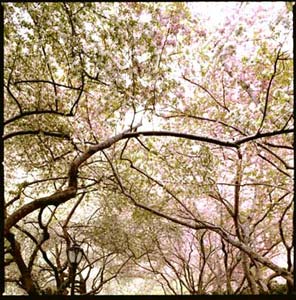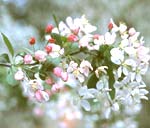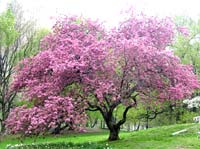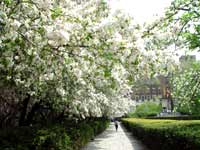New York City's Heritage Crabapples

Trees in Central Park Conservatory Gardens
Photo by: Benjamin Swett

Each spring, from mid-April into May, New York City parks are abloom with the sights and scents of flowering crabapples. Dark rose-colored buds yield to soft pinkish white sweetly smelling flowers, occurring in great profusion along gnarled, craggy branches that originate low to the ground and meander elegantly upward in all directions. Some of the finest mature crabapple stands in park landscapes, including Riverside Park's Crabapple Grove and Central Park's Conservatory Gardens allee, were planted in the 1930s and early 1940s as part of the federal Works Progress Administration park construction projects under Parks Commissioner Robert Moses.

These graceful trees are very much a part of New York City's horticultural heritage, as integral to our landscape history as the remaining great American elms, or the living arboreal collections of our botanical gardens. Their distinctive multi-stemmed branching form is perhaps as stunning as the tree in flower, yet if you plant a crabapple tree today, chances are that it won't develop into one of the beauties of yore. That is because nurseries tend to train them to have a single stem with higher branches. It's also difficult to choose, among the hundreds of commercially available cultivated varieties, those types that have proven disease resistance in this climate.
